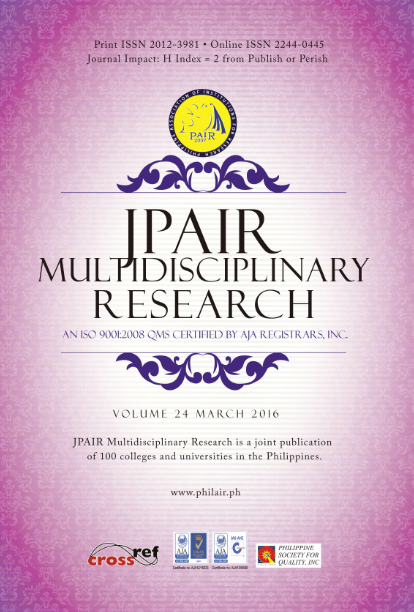Sadtong Panahon: Oral Storytelling Training Course for Pre-Service Teachers
DOI:
https://doi.org/10.7719/jpair.v24i1.380Keywords:
Oral Storytelling, Sadtong panahon, Oral storytelling training course, descriptive developmental research design, Sorsogon, PhilippinesAbstract
Storytelling is an art that contributes not only to students' academic success, but also to their emotional well-being. However, not many teachers have skills in storytelling. The reason maybe that they have not been trained in the art, or they lack knowledge of it. The study identified the different reactions of the students during storytelling sessions as observed by the students themselves and the teachers. The study is both quantitative and qualitative in nature. It made use of a descriptive developmental research design. The respondents were 60 students and 60 teachers. Survey questionnaires were used to gather data. Unstructured interviews were also conducted to validate their answers. Results showed that most of the students are bored and do not engage themselves during the storytelling session. This may be attributed to poor skills in forming connections and poor communication skills of the teachers. Based on the findings, it can be concluded that teachers' way of telling a story affects the students' understanding and interest in the story. However, this skill is lacking in most teachers. Varied problems related to these skills are met by the teachers. The researchers recommend that teachers need to improve their communication skills to become effective storytellers and a storytelling training course should be designed and implemented to train pre-service teachers and enhance their storytelling skills.
Metrics
Downloads
References
Alison, B. T. (2013). Teaching and Performing Theatre for Youth Using Physical Storytelling.
Downloads
Published
Issue
Section
License
Copyright (c) 2016 Marigrace D. Carretero, Jackielyne M. Bosquillos, Jhonner D. Ricafort

This work is licensed under a Creative Commons Attribution-NonCommercial 4.0 International License.
Open Access. This article published by JPAIR Multidisciplinary Research is licensed under a Creative Commons Attribution-Noncommercial 4.0 International (CC BY-NC 4.0). You are free to share (copy and redistribute the material in any medium or format) and adapt (remix, transform, and build upon the material). Under the following terms, you must give appropriate credit, provide a link to the license, and indicate if changes were made. You may do so in any reasonable manner, but not in any way that suggests the licensor endorses you or your use. You may not use the material for commercial purposes.

























